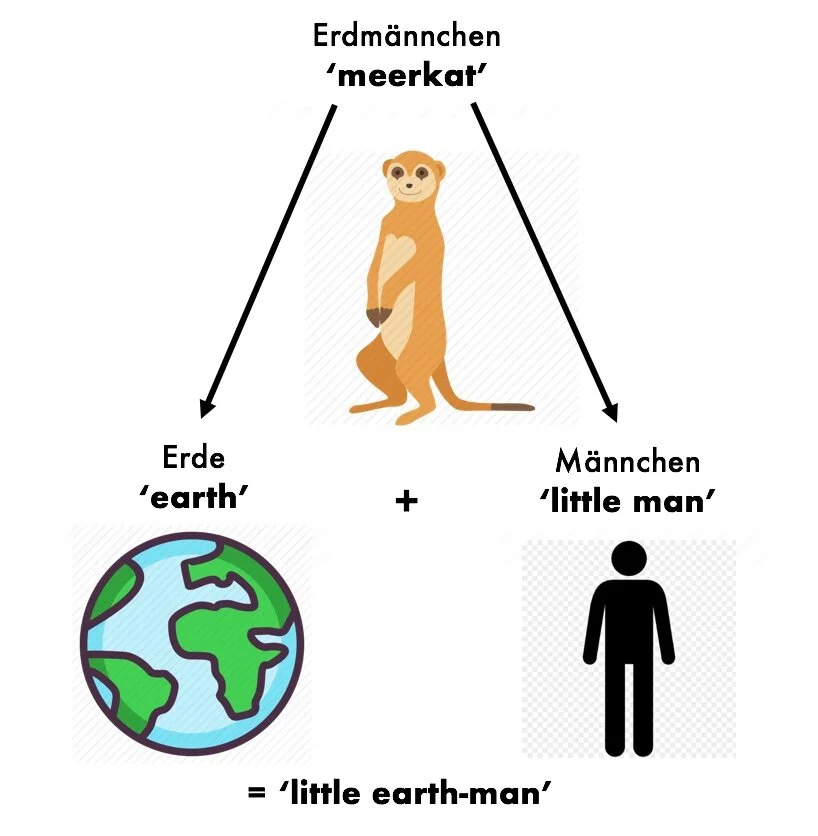Korean Pronunciation Tips, Part 1: Consonant Sounds
Sunset over the Han River, Seoul, South Korea (📸: Lisa Jeon).
Korean pronunciation is considerably different from English pronunciation, and because of this, it can take lots of practice to pronounce and interpret Korean words accurately. One of the most common mistakes that learners make is assuming that they can pronounce a Korean letter exactly like its English Romanization. Alas, this is not how Korean pronunciation works. In this first post in our “Korean Pronunciation Tips” series, I share a few essential things to know about learning the pronunciation of Korean consonants.
BASIC CONSONANT SOUNDS
Although Korean and English pronunciation are very different, the good news for learners of Korean (especially folks whose first language is English) is that the Korean alphabet Hangeul 한글 is a featural alphabet. Letters in featural alphabets have shapes based on their phonology -- so if you can understand the system, you can read the letters very easily! This makes Hangeul one of the simplest alphabets to learn in the world. The Hangeul letters for the Korean consonants were created with inspiration from the shape of the oral cavity. The five basic consonant shapes are: ㄱ (velar — the shape of the tongue touching the back of the “roof” of the mouth), ㄴ (alveolar — the shape of the tongue touching just behind the teeth), ㅁ (bilabial — the shape of the lips), ㅅ (dental — the shape of a tooth), and ㅇ (glottal — the shape of the throat). This is visually represented in Figure 1 below.
Figure 1. The basic consonant letter shapes of Hangeul.
These five basic consonants are the basis for creating the other nine derived consonants of the Korean alphabet, by adding lines to represent the different sounds produced with different places of articulation in the oral cavity:
Velars: ㄱ, ㅋ
Alveolars: ㄴ, ㄷ, ㅌ, ㄹ
Bilabials: ㅁ, ㅂ, ㅍ
Dentals: ㅅ, ㅈ, ㅊ
Glottals: ㅇ, ㅎ
The full set of 14 consonants is shown in Figure 2 below with their letter names, Romanizations, and pronunciations in International Phonetic Alphabet (IPA) notation.
Figure 2. The 14 Korean consonant sounds.
A quick note on the Romanization of Korean: while it may be helpful for learners so that they can associate Korean letters with similar-sounding English sounds, as I mentioned, it can also cause A LOT of confusion for learners when it comes to pronunciation. There is considerable variation in Romanization spelling conventions, even among Koreans themselves. For example, the Korean word for Korea 한국 may be Romanized like “Hangook”, “Hankook” or “Hanguk”. The word for the Korean alphabet 한글 may be Romanized either as “Hangeul” (as I do here) or as “Hangul” in other places. This is why we move away from using Romanization and toward only using 한글 as soon as possible at LanGo!
Also note that the reason you see two different pronunciations in the table is because the sound of a Korean consonant can vary depending on its position in a word or syllable block. We’ll discuss this later in the last section.
PLAIN, ASPIRATED, AND TENSE
In English many pairs of consonants differ in pronunciation depending on if they are voiced (produced with vibration of the vocal cords) or voiceless (produced without vibration of the vocal cords). For example: the consonant pairs p/b, t/d, and k/g differ in pronunciation only in voicing. Korean consonants, on the other hand, mainly differ depending on whether they are plain, aspirated, or tense (see Figure 3 below).
Figure 3. Plain, aspirated, and tense Korean consonants.
Plain consonants (ㄱ, ㄷ, ㅂ, ㅅ, ㅈ) are pronounced without any strong aspiration (burst of air). To get an idea of the difference between aspirated and unaspirated sounds, you can put a piece of paper in front of your mouth and say the English word “pin” ([pʰɪn] and then the word “spin” ([spɪn]). The p sound in “pin” is pronounced with aspiration but pronounced with no aspiration in “spin”. Listen to how these plain Korean consonants are pronounced without aspiration.
By contrast, aspirated consonants (ㅋ, ㅌ, ㅍ, ㅊ) are pronounced like their plain counterparts but with strong aspiration. In Korean, aspirated consonants must be pronounced with a burst of air just like for the p sound in “pin”, and this is important for both speaking and interpreting Korean accurately. Listen to these aspirated Korean consonants. Can you hear the burst of air that accompanies them?
Tense consonants (ㄲ, ㄸ, ㅃ, ㅆ, ㅉ) are called 쌍 (ssang) ‘twin’ letters in Korean, as their representation involves doubling the letters of several of the basic consonants (as you can see, the word 쌍 itself has a twin letter ㅆ). These are pronounced with a harder and stiffer voice compared to their plain counterparts and are thus called “tense” consonants because the tongue, glottis, and diaphragm are tensed when producing them. Imagine loudly saying “duck!” in English to warn someone of danger. The hard d sound in “duck!” is similar to the sound made for the tense consonant ㄸ in Korean. Listen to how these tense Korean consonants are pronounced. Can you hear a tenser, stiffer voice compared to the plain consonants?
SYLLABLE STRUCTURE
A syllable can have as many as three parts: the onset, nucleus, and coda. The onset and coda are consonants that appear at the beginning and the end of the syllable, respectively. The nucleus forms the core of the syllable and is most often a vowel or a combination of vowels.
In the word 힘 ‘strength’ for example, [h] is the syllable onset, [i] is the nucleus, and [m] is the coda (see Figure 4). A syllable must always have a nucleus. If a coda is present in a syllable, the nucleus and the coda form a single unit called a rhyme; otherwise, the nucleus makes up the rhyme by itself. In the example below of 힘 ‘strength’, [im] forms the rhyme.
Figure 4. Korean syllable structure.
Korean syllables must always start with an initial consonant symbol (the onset of a syllable), written at the left or top of a syllable block. Then a vowel (the nucleus of a syllable) follows, written at the right or bottom of a syllable. The syllable could stop there, or there could be an additional vowel, consonant, or consonant cluster, written at the right or bottom of the syllable block (representing the coda of the syllable). See the figure below for some possible syllable block shapes, where C = ‘consonant’ and V = ‘vowel’, and the numbers show the order of writing, reading, and pronouncing the individual letters that make up each syllable block. For example, in (1) 한, ㅎ (/h/, top left) is the initial consonant,ㅏ (/a/, top right) is the vowel, and ㄴ (/n/, bottom) is the final consonant, and the resulting syllable is pronounced "han". Thus, similar to English, Hangeul letters are written, read, and pronounced from left to right, and from top to bottom.
Figure 5. Possible shapes of Korean syllable blocks.
But unlike English, Korean is a syllable-timed language and not a stress-timed language, meaning that syllables take approximately equal amounts of time to pronounce, rather than some syllables being longer or shorter depending on syllable stress.
INITIAL, MEDIAL, AND FINAL
It is important to notice where a Korean consonant occurs within a syllable, as this affects its pronunciation.
Initial consonants are typically voiceless, with the exception of ㅂ, which is voiced in initial position. Initial ㄹ is generally pronounced more like an alveolar tap [ɾ] than an alveolar lateral approximant [l]. Initial ㅇ is also special in that it has no sound of its own when it stands in initial position, instead taking the sound of its following vowel. For instance:
가 [ka]: sounds more like [k] than [g]
다 [ta]: sounds more like [t] than [d]
바 [ba]: sounds more like [b] than [p]
자 [tɕa] (cha): sounds more like [tɕ] than [dʑ]
라 [ɾa]: sounds more like [ɾ] than [l]
아 [∅a]: has no sound value, and it instead takes the sound of the following vowel
Listen to how these initial consonants sound.
Medial consonants have many complex sound changes. One of the most important ones for learners to know is the sound change that occurs depending on whether a medial consonant follows another consonant or a vowel, especially for the consonants ㄱ, ㄷ, ㄴ, and ㅂ. In consonant-consonant sequences, a word-medial consonant that follows another consonant is pronounced like a tense consonant, with a harder and stiffer voice. However, in vowel-consonant sequences, a single medial consonant that follows a vowel is pronounced the typical way. For instance, for the medial ㄷ in these words:
먹다 (meok-da) ‘to eat’: sounds like [mʌk.t͈a], versus
가다 (ka-da) ‘to go’: sounds like [ka.da]
As you can see, this sound change is NOT well captured by the romanization. Listen to the sound changes of the middle consonant ㄷ in these words.
Final consonants or consonant clusters that appear at the bottom of a Korean syllable block are called the 받침 (you can think of these as the ‘support’ or base of Korean syllable blocks) and these also have many complex sound changes. One of the most important general things to know about pronouncing these final consonant sounds is that the sounds often get “lighter” (become shorter or voiceless), move over to the next syllable, or even become silent. For instance, for the final consonants in these words:
밥 (bap) ‘cooked rice / meal’: sounds like [bap] as the final consonant ㅂ sound becomes shorter and voiceless compared to its initial consonant ㅂ counterpart
먹어 (meok-eo) ‘to eat (informal)’: sounds like [mʌ.gʌ] as the final consonant ㄱ sound “moves over” to become the onset of the next syllable
많이 (man-i) ‘many / a lot’: sounds like [ma.ni] as the 받침 consonant sounds at the bottom of the syllable block change; the ㅎ becomes silent and the ㄴ sound “moves over” to become the onset of the next syllable
Listen to the sound changes of the final consonants in these words.
In 받침 position, final ㄹ is also pronounced more like an alveolar lateral approximant [l] (like at the end of the English word ‘pull’ [pʊl]) and final ㅇ is pronounced as [ŋ] (like at the end of the English word ‘sing’ [sɪŋ]). A good example of this phenomenon is the pronunciation of the object particle -를 [ɾɯl].
Being aware of the way consonants are pronounced will significantly help you improve both your speaking and listening skills in Korean. Let us know if this post was helpful and send us questions or comments below or on social media (Facebook/Instagram/Twitter).
In the next post in this “Korean Pronunciation Tips” series, I’ll share a few essential things to know about learning the pronunciation of Korean vowels. 그때까지 한국어 열심히 공부하세요!
































Tools for helping you master some of the trickier points of German grammar, whether you’re learning it for the first time or wanting to review the fundamentals. Los geht’s!